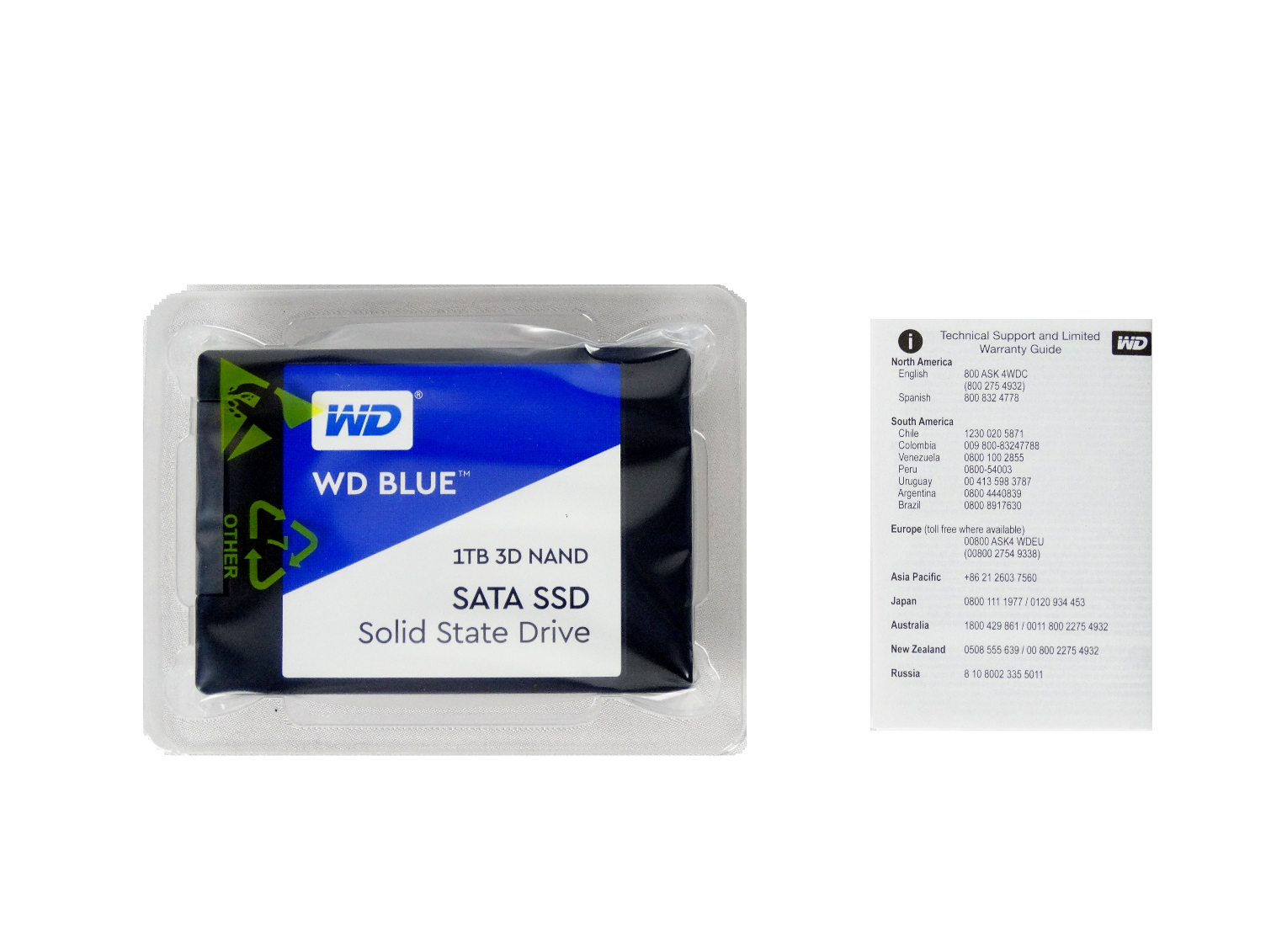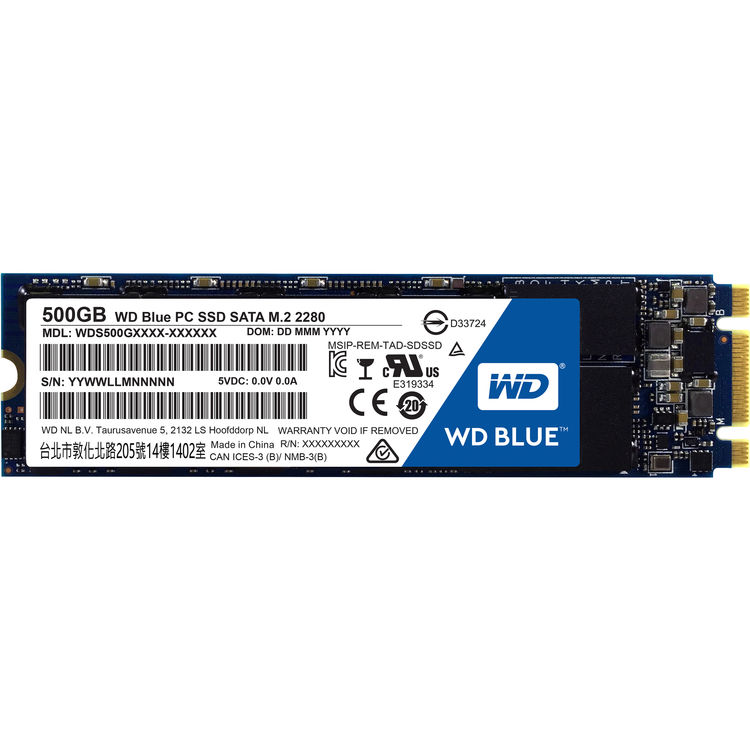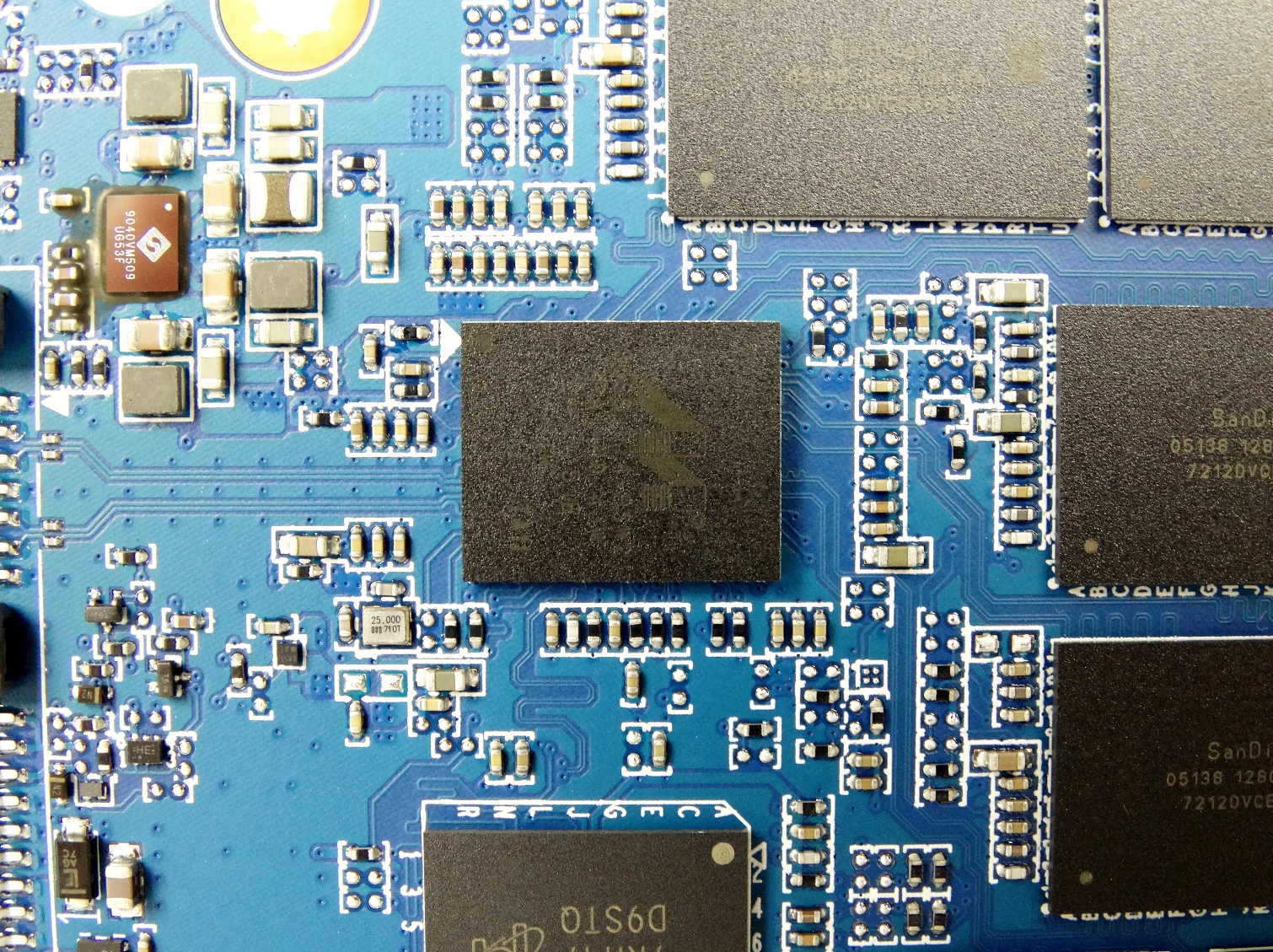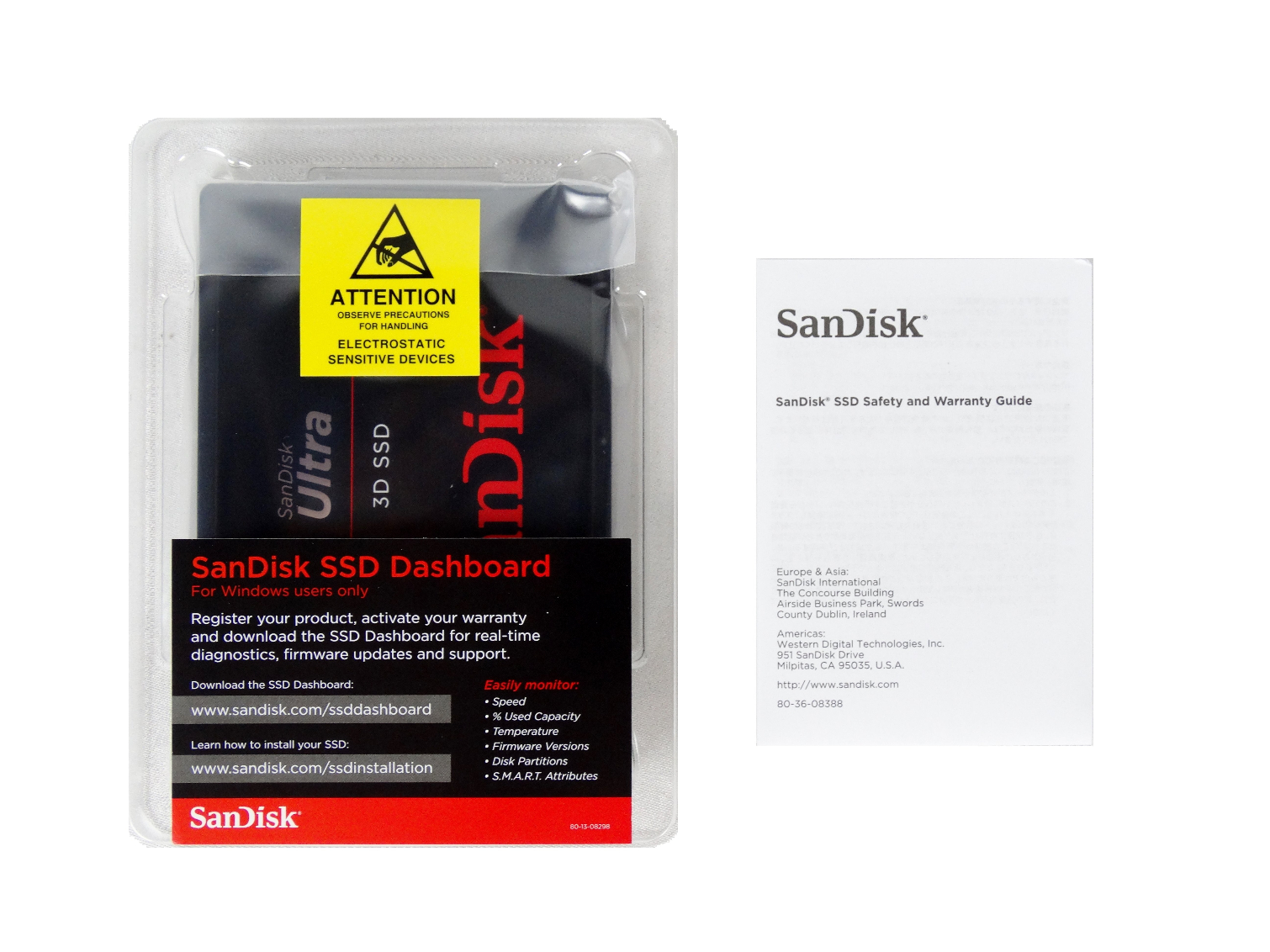Early Verdict
The Western Digital Blue 3D 1TB offers excellent performance at a good price point. The drive is within a few performance points of the 850 EVO, but it sells at a much lower price. You won't be disappointed in this choice.
Pros
- +
MLC-Like performance
- +
Aggressive endurance rating
- +
Low price point
- +
Bundled software suite
Cons
- -
Some TLC consistency issues
Why you can trust Tom's Hardware
Features & Specifications
SanDisk and manufacturing partner Toshiba seem late to the 3D party. Their joint venture leveraged planar NAND longer than many industry rivals while simultaneously ramping up 3D NAND production for other markets. 3D BiCS NAND has shipped for at least a year primarily in mobile devices, but the third revision, now up to 64-layers high, is the next step up the ladder and SSD worthy.


The WD Blue and SanDisk Ultra come to market as the first SATA SSDs with 3D BiCS, but both drives have identical hardware and specifications. The companies plan to use the duo to tackle two distinct markets. The WD Blue will target channel, distribution, resellers, and system integrator builds for DIY enthusiasts. The SanDisk Ultra will target brick and mortar retail stores and end-users in the upgrade market, with a focus on creative types. That doesn't mean much to us because both sell at Amazon, Newegg, and B&H Photo.
Most of the models are already shipping, and you can buy them today. The 2TB models in 2.5-inch and M.2 2280 form factors will come later in the quarter when the company develops larger packages with increased density.
We've already tested the new 3D TLC flash in the Toshiba XG5, an OEM-focused NVMe SSD, and found it to offer robust performance. BiCS is very "Samsung-like" because it is real high-performance TLC, in contrast to planar (2D) TLC that hides its low performance behind SLC buffers. Like the Samsung 850 EVO, the new Blue and Ultra 3D SSDs do not lose a significant amount of performance after sustained write activity. The line graph above is from our third consecutive HD Tune Pro run, which is a test that writes sequential data to the entire usable capacity of the SSD. We can reach the same maximum speed with Toshiba's 15nm planar NAND, but it only lasts for a few seconds before the workload saturates the SLC buffer, while the Blue's BiCS NAND doesn't suffer the same fate. That's good news for end users because large file transfers will not drop to HDD performance levels.
The new flash/controller combination saturates the SATA 6Gbps AHCI connection. That allows these TLC SSDs to act much more like MLC-based products. However, BiCS-powered NVMe SSDs will still encounter a slight performance drop-off because the PCIe 3.0 x4 connection increases the performance ceiling, which exposes the performance decline after lengthy periods of write activity.
Specifications
Western Digital Blue 3D
The differences between the Western Digital Blue 3D and SanDisk Ultra are mostly cosmetic. The Blue 3D also ships in an M.2 2280 single-sided form factor, while the Ultra will only ship in the 2.5" form factor.
SanDisk Ultra 3D
The two series come to market in four capacities that span from 250GB to 2TB, but the 2TB models are delayed. They will appear later in the year in both 2.5" and M.2 2280 (single-sided) models for the Blue 3D lineup. B&H Photo already lists the SanDisk Ultra 3D in 2TB, but only as a preorder item.
Get Tom's Hardware's best news and in-depth reviews, straight to your inbox.
The high-capacity models provide 560/530 MB/s of sequential read/write throughput, while the 250GB model drops 550/525 MB/s. Random performance weighs in at 95,000/84,000 read/write IOPS for most models, but the 250GB drops to 81,000 write IOPS.
WD tapped the Marvell 88SS1074 4-channel controller with low-density parity check (LDPC) error correction. This is the same controller WD used in the older Blue SSD that began shipping in 2016. Crucial also uses the controller in the MX300. The controller has yet to impress us with the products we've tested, but that may change today. BiCS will only come in TLC flavors for consumer SSDs, but it may be able to take up the slack and allow the 88SS1074 to spread its wings--its performance surprised us in our XG5 preview article. Both Toshiba and SanDisk avoided some of our deep dive questions about program timing, planes, and architecture, so we're forced to compare the flash in end products rather than on paper. Conversely, Samsung has no problem publishing detailed V-NAND specifications.
The WD/Toshiba joint venture has 64-layer BiCS NAND die in 256Gbit and 512Gbit capacities, but the companies won't disclose which die they use in the Blue and Ultra. We experienced the same with Toshiba's XG5. Toshiba hasn't released the 2TB XG5, and WD/SanDisk hasn't shipped the 2TB Blue/Ultra models, so I assume all the products we've tested use the 256Gbit die. The 2TB models may have to wait for the 512Gbit die, but it could also be a delay in building high-capacity NAND packages for the larger models.
Pricing, Warranty & Endurance
We found all but one of the drives listed at B&H Photo. The pricing changed for the SanDisk Ultra 3D drives a few times while we monitored the action, but it seems to have stabilized now. The low-capacity WD Blue 3D models appear to have a slightly lower price than the Ultra 3D equivalents. For instance, the WD Blue 3D 250GB retails for $89.99, but the Ultra 3D 250GB is $99.99.
B&H also lists the SanDisk Ultra 3D 2TB for $549.99, but it doesn't list the WD Blue 2TB. Pricing scales up with the two mid-capacity models, but expect to pay around $150 for the 500GB and $280 for the 1TB early during the early release cycle. Resellers tend to list WD products at higher prices at first and then lower them within a few weeks. We've seen it happen several times with the company's HDDs--some of the price reductions have even been large enough to change our opinion about the product. We don't expect to see any $100 price drops with these products like we've seen in the past with high-capacity HDDs, though.
Western Digital and SanDisk back their first 3D SATA SSDs with a three-year limited warranty. The 250GB has a 100TBW endurance rating, and that doubles for each capacity up to the 1TB drive's 400TBW. The 2TB models feature a 500TBW rating, which is a modest endurance increase over the 1TB's 400TBW.
WD tells us that most users only write around 10GB of data per day after the initial system setup and software installation. That's in line with our expectations of normal user activity.
Software
Both WD and SanDisk provide free access to the SSD Dashboard software suite. Sadly, the software will not work across both product families; you can't use the WD version to secure erase a SanDisk drive, for example. The software is identical other than product support and aesthetic changes that consist of branding changes from red to blue, and vice versa.
The SSD Dashboard software is very powerful, but it isn’t as refined as some of the other popular software suites. It does offer some features, like live disk performance monitoring, that we don't find with other software suites.
A Closer Look
Western Digital Blue 3D








We expect some initial confusion because both the older Blue and the new Blue 3D SSDs are at retail simultaneously. We found the Blue 3D model we're testing at Newegg under its specific product number, but its item description was for the older Blue (2016). The listing even had user reviews from the older product, so you'll need to be very careful when ordering. Retail shoppers will be able to spot the "3D NAND" on the product package in person.
SanDisk Ultra 3D






The SanDisk drives features even more 3D marketing on the retail package, so it will be easy to tell the difference between the older Ultra and new Ultra with 3D NAND.
The Ultra 3D ships with an insert reminding you to download the SSD Dashboard software, but the Blue doesn't. Both come with a warranty statement/guide and feature identical hardware inside the plastic case. We spoke with the product manager and learned that both drives would use the same build of materials, so you won't have to worry about either series moving over to the performance-reducing 512Gbit die later if it originally shipped with the 256Gbit die.
MORE: Best SSDs
MORE: How We Test HDDs And SSDs
MORE: All SSD Content

Chris Ramseyer was a senior contributing editor for Tom's Hardware. He tested and reviewed consumer storage.
-
Ne0Wolf7 Perfect timing or me, my SSD has only 20GB left. I wonder if we'll see and price changes soon...Reply -
AgentLozen Great review. You guys must think pretty highly of these SSDs if you're giving them the Editor's Choice award.Reply
A SSD that's a close competitor to the 850 EVO has been a long time coming. It's good to see that it's coming from Western Digital. When the Blue SSDs first came around, i recall that their prices were waaaay to high. WD has gotten it sorted out since then. Great for competition. Great for buyers. -
hannibal Yep... Good year!Reply
CPU competition is back because of AMD and ssd competition is coming back because of these and some other new SSDs!
Intel is going to the right direction (at last have to say, by releasing more cores to customers) I am quite sure that Samsung also have to react, so quite soon we will see better products also from there! -
Brian_R170 I just bought an Acer Spin 3 last week for my wife on Aug 7. All reviews said the laptop was good, but disk performance was abysmal, and they were right. I swapped out the 1TB Seagate 5400 RPM mechanical drive with a 1TB WD Blue on Aug 10. The difference was huge, but no way to directly compare to other SSDs. I didn't know much about the drive before purchasing, but I got a really good price on it. I was hoping I didn't make a mistake. This article puts my mind at ease.Reply -
Randall_Lind I have two WD blues 512gb one not sure they are 3D ones for a Acer laptop and HP all-in-one. The acer one life is down to 98% brought it 2/23/16. The other one is 100% brought 3/9/17/. I know Why cry over 2% but this worries me about how long it will last. if I lose 2% a year seems like a lot to me. I am using the WD SSD dashboard software. This is how I know.Reply -
Sakkura Reply20087111 said:I have two WD blues 512gb one not sure they are 3D ones for a Acer laptop and HP all-in-one. The acer one life is down to 98% brought it 2/23/16. The other one is 100% brought 3/9/17/. I know Why cry over 2% but this worries me about how long it will last. if I lose 2% a year seems like a lot to me. I am using the WD SSD dashboard software. This is how I know.
If your SSD loses 2% of its rated write endurance over the course of 18 months, that means it has enough write endurance for around 75 years of use.
Do you expect to be using your current SSDs well beyond the year 2090? -
NinjaNerd56 I use a WD SSD in my server farm; excellent results.Reply
My Christmas present to myself this year will be a 1TB or 2TB WD Blue for my game tower.
Woo hoo! -
wifiburger meh i passed on 3d ssd, i did get the wd black x4 pcie (2000 MB a sec )and wd blue ssd sata, good thing the ryzen mobo as two m.2 slots ?? less cables in my caseReply -
the nerd 389 @RANDALL_LIND, 2% is nothing, really. I'd only start to be concerned at 10-15% per year. I edit videos. I can eat through 10% in a couple of months. This is not the drive for me.Reply
@Chris: Do you think you could present the variance/standard deviation for the performance consistency section? The 10%, 1%, and 0.1% transfer rates in steady state may also be useful, although perhaps not for this drive in particular.





